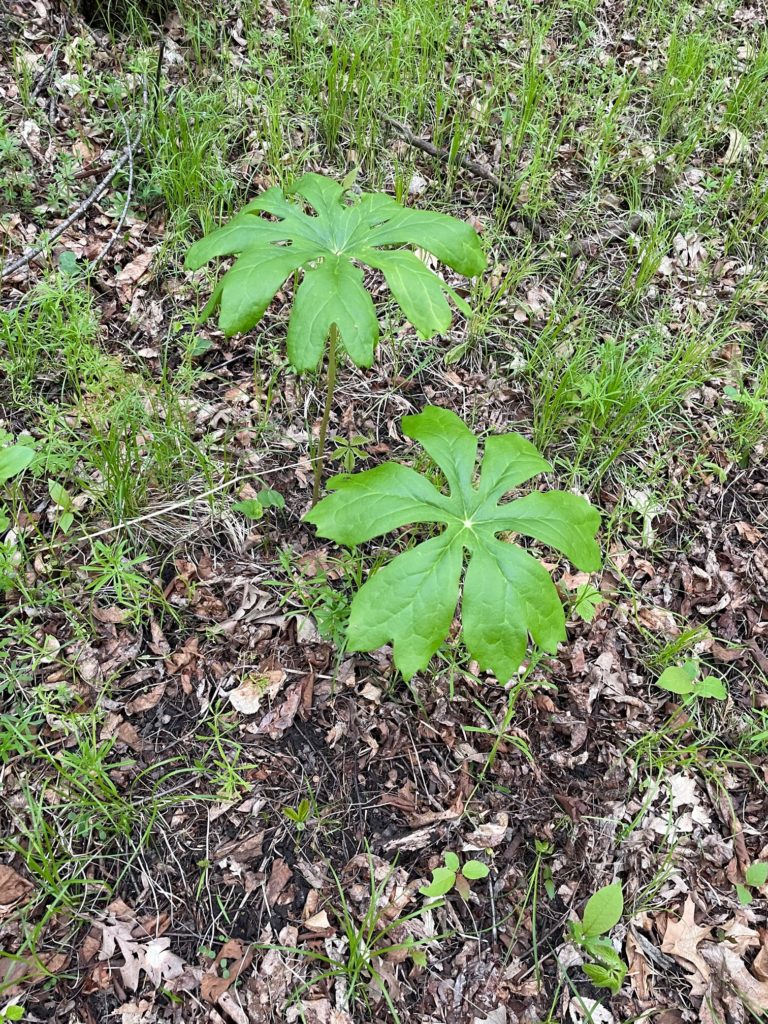

Native To State: YES
Naturally Occurring: NO
Description
Appearance: Podophyllum peltatum is a herbaceous perennial known for its large, umbrella-like leaves and single, nodding white flower.
Leaves: The leaves are deeply lobed, resembling a closed umbrella.
Flowers: The plant produces a single, nodding white flower with six petals.
Habitat: It is commonly found in rich, moist woodlands.
Distribution: Mayapple is native to eastern North America.
Occurrence
Planted throughout all the wooded areas.
























